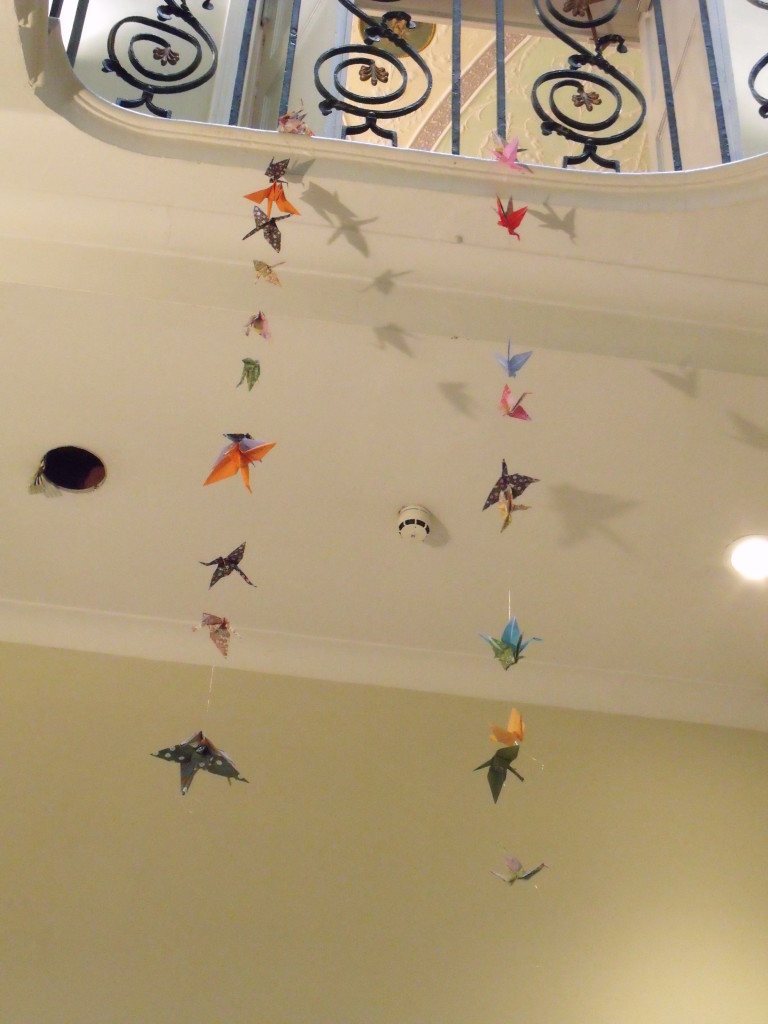
One thing amongst many others that I love about living in London, especially during a long period of no travelling, is that I get to have little experiences of India and tasters of lots more countries that I haven’t been to. These tasters allow me to reminisce about travels or plan for further exciting travels to new far flung countries.
While many good restaurants serve delicious authentic Indian food, particularly good thalis and street food – such as Dishoom in Covent Garden and Govinda’s in Soho, I am talking of course more of the taste for the aesthetic, visual and textural – textiles. And last weekend I received a good dose of this at the Asia House Fair.
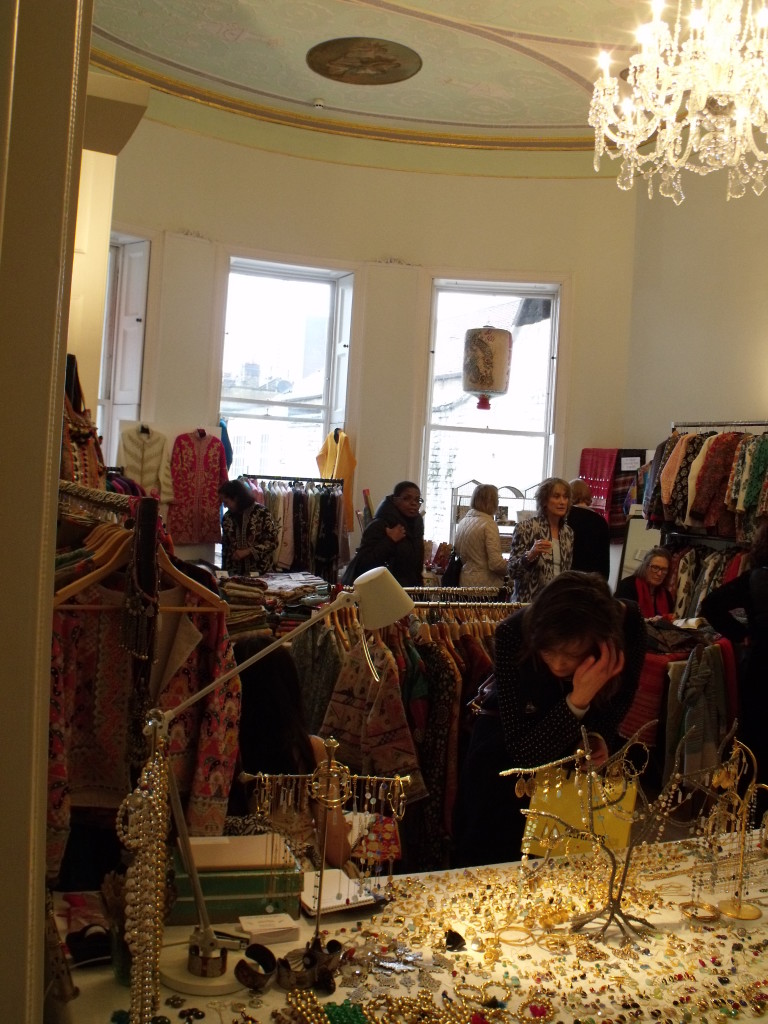
Stand-out stalls – Textiles from India, Pakistan, Afghanistan and Central Asia.
Among the stallholders, of my favourites, were Gallery 196 whose stalls are always a visual delight of bright, bold colours in a variety of curious objects – a little pocket of India. Nigel Atkinson‘s contrasting stall drew me in equally but for its simple contemporary textiles, bold blocks of colour, delicate textured scarves and soft natural fabrics. I first discovered both these traders and designers at the Winter Selvedge Fair.
Joss Graham was exhibiting his usual fabulous eclectic array of textiles, jewellery and artefacts from the Indian Subcontinent as well as Africa, the far East and Central Asia. Some of my favourites, along with some fantastic ajrakhs (it goes without saying), were kantha embroideries, bandhani scarves and beautiful carved ivory door knobs. Joss has a great collection of quilted block-printed jackets from Northern India and Pakistan – contemporary versions of the ralli quilts traditionally made using recycled fabrics and hand sewn together using the distinctive running stitch. These seem to be everywhere now, and were a strong feature of many stall holders.
A series of talks by stallholders were held over both days. I managed to catch one on the Saturday by Zardozi – Markets for Afghan Artisans. This was an enlightening and inspiring talk by the director Dr Kerry Jane Wilson. The organisation is currently working with around 6,000 women – helping them to set up businesses, providing marketing, design, branding support, credit and financial advice and skills training according to market demand. They are working towards partnering with a total of 9,000 women – at the request of their funding source.
The majority of the markets they work towards are in their own country – which I found interesting as many design and marketing development organisations in Asia aim for a Western market. Also interesting was to hear how fast changing Afghan fashions are – according to Kerry they change much more often than Western ones. Zardozi do however produce products for Western markets – the ones taken to trade fairs such as this one at Asia House. For these markets they have to ensure a much higher quality than for the products sold at home.
Another eye-catching stall was that of S Jo – beautiful and unique textile jewellery and accessories designed by Seher Mirza in collaboration with a group of skilled embroiderers from villages in Southern Pakistan. The products use traditional motifs, stitches and patterns the women have embroidered in garments for many generations. These motifs, stitches and patterns have been given new life and transformed into statement necklaces, pendants, bold earrings and bracelets.

Strands of embroidery threads are wrapped at intersections by contrasting threads and attached also at intersections are bold embroidered ‘beads’ (for want of a better name) which incorporate the traditional geometric patterns – stripes, circular motifs, flowers and stitched embedded mirrors. These ‘beads’ are also made into pendants on several thread strands, and earrings. The collection includes many variations of this technique and the unique style. The distinct patterns and motifs also feature on cushions and scarves and small decorative hangings.
Seher is studying for a PhD at the RCA developing her project ‘Threads of the Indus’ which aims to empower women embroiderers in villages in Pakistan through design led collaboration. The name S Jo was derived from ‘jo’ meaning ‘of’ or ‘from’ in the regional local language and ‘S’ standing for the project’s values – Social empowerment and enterprise, Sustainability and Stitch-craft in the region of Sindh. (See Facebook page for more information). The project works in collaboration with Sindh Rural Support Organisation.
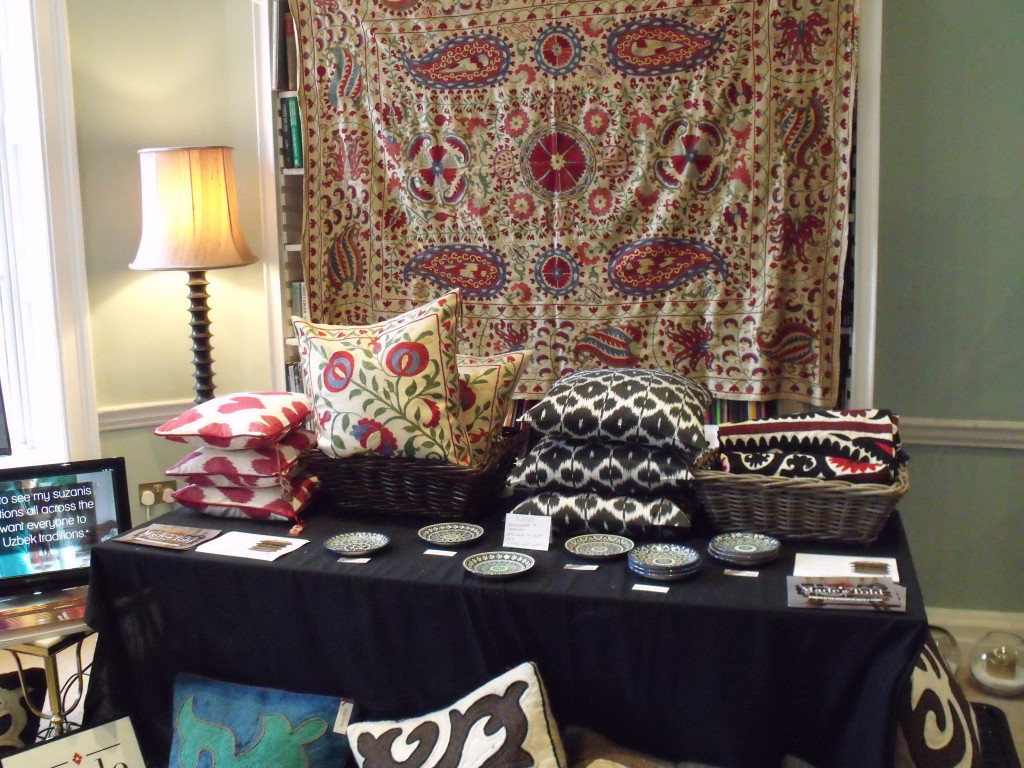
I have always loved Central Asian textiles, particularly crafts that are most traditional to the area – embroidered suzanis, felt and ikat. I long to travel along the silk road visiting craftspeople and finding out how much is still being produced. Made and Told were one organisation at the Asia House fair selling home-ware with traditional patterns and designs of the Silk Road, although each with their own distinct style. I loved the large suzani hanging at the back of the stall. These are made using chain stitch and a hooked needle (in English called a tambour hook), with the fabric stretched over a frame, very much like the ari embroidery of Gujarat, India, but with its own very distinctive style – bold geometric patterns, large flowers and swirls.
Made and Told are a new company, having just established in September 2012. They partner with local organisations in several countries across Central Asia that work with artisans to provide business and training opportunities, donating 50% of their profits to these organisations. Another aim is to communicate the stories of the artisans and the history of these countries and their crafts, hence the name ‘Made and Told’.
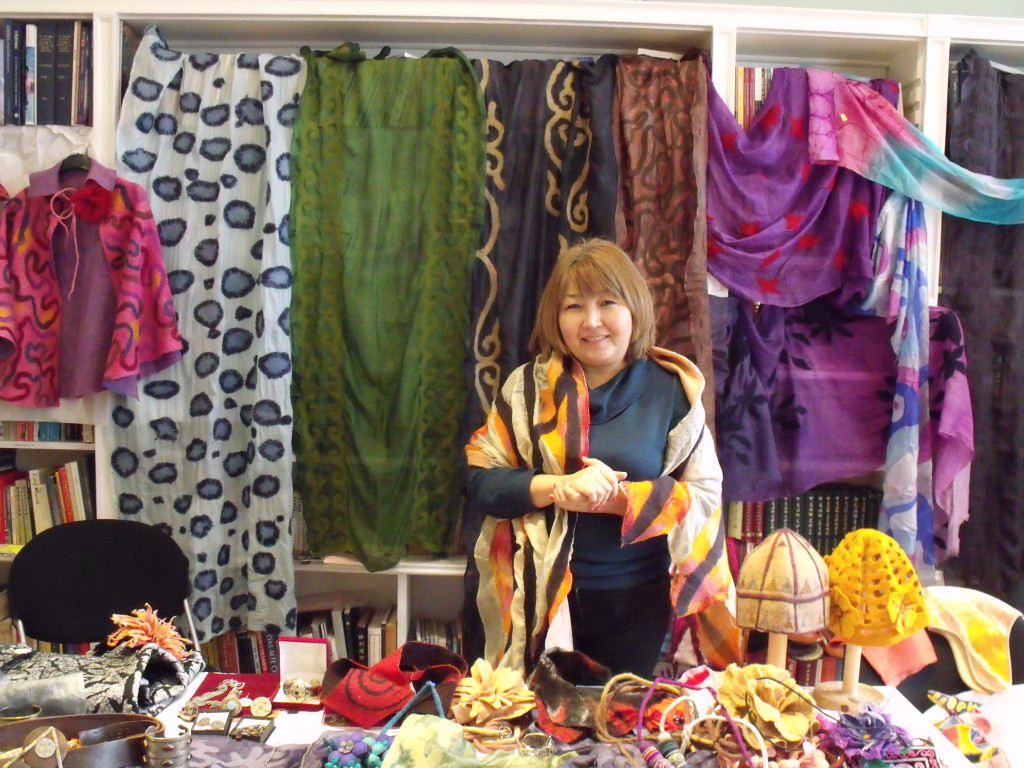
Other stalls showcasing traditional and contemporary Central Asian textiles were Kazakhstan For You (pictured above), Shirdak and Treasures from the Silk Road.
Tribal Art
Moving away from textiles, I will mention just one more stand that I loved – the Adivassi Arts Trust. The term ‘adivassi’ refers to the indigenous people of India, and exhibited were works of the indigenous artists of the Gond, Warli and Soara tribes. The trust works with these tribes to ‘preserve and promote tribal art and culture’ and they do this through various workshops, exhibitions, animation films, seminars and research.
I had seen the art of the Warli tribe from Maharastra before and immediately recognised the unique style – quirky stick figures often painted in a pattern of circles or swirls amidst flora, trees and animals, communicating a passion for nature, and narrating the tribe’s social and daily activities. The painting is done with cow dung and earth and usually on the walls of houses, but more often now they are painting on paper to sell.
The paintings of the Soara tribe from Orissa are similar in style to the Warli paintings. They both share a similar painting style of human figures and nature and both depict daily life and activities. The main difference is that the Soara use much more colour in their paintings.
Previous to visiting the fair, I had visited Massala Zone (an Indian restaurant chain in London) for a thali, and not overly impressed with the thali (it just didn’t live up to those I’d eaten in Gujarat!), I spent most of the evening admiring the art on the walls. The two women representing the Adivassi Arts trust at the fair informed me that the owner of the restaurant chain had commissioned the art to be painted by a Gond artist all the way from Madhya Pradesh – Bhajju Shyam. Gond painting is quite different from both Warli and Soara painting with its own unique style, recognisable by its bold abstract shapes depicting mainly animals and nature. The shapes are filled with stripes or dots – a little like Aboriginal painting of Australia. A relatively new art form, the paintings, like those of the Warli and Soara, are the artist’s expression of their perception of life.
The London Jungle Book (Tara Publishing, London 2004) tells and illustrates the story of Bhajju’s time in London and is filled with his art. See below for how you can get hold of one.
(I have referred to the following blog: http://mamtavn.wordpress.com/2011/12/06/tribal-art-of-india/ to obtain some of this information on Indian tribal painting).
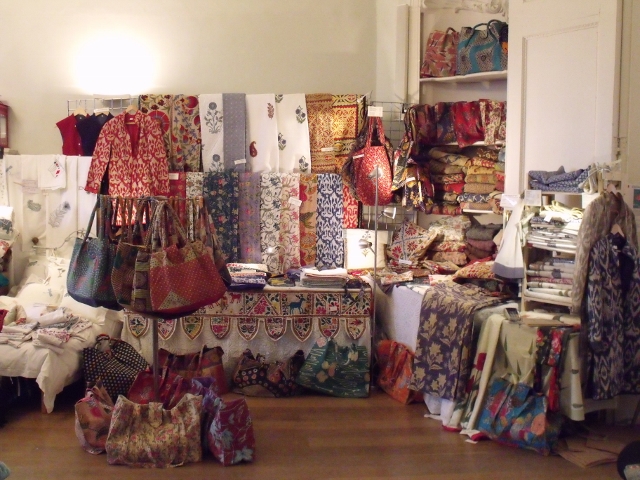
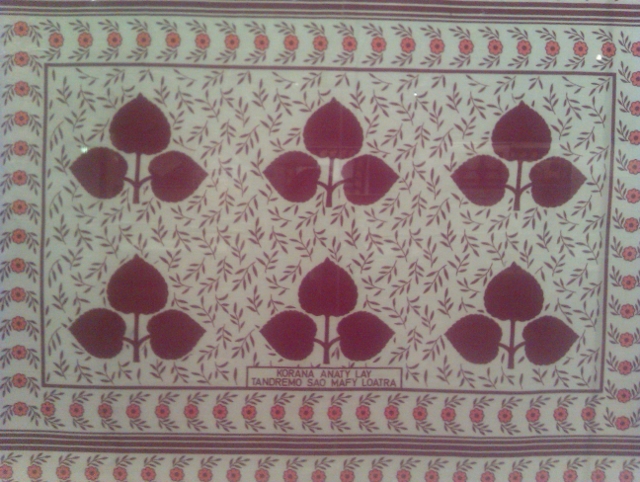
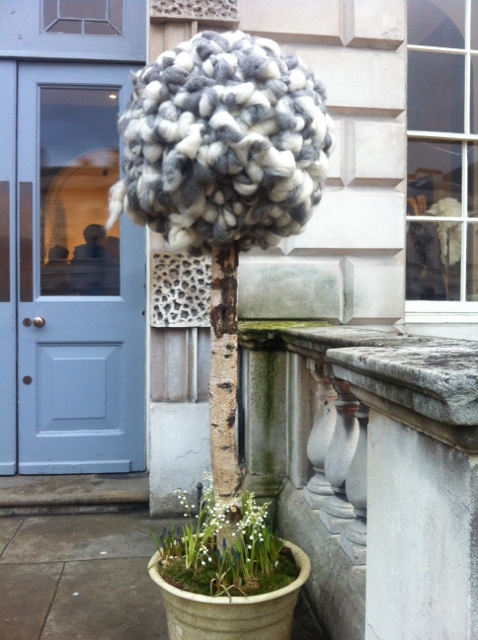
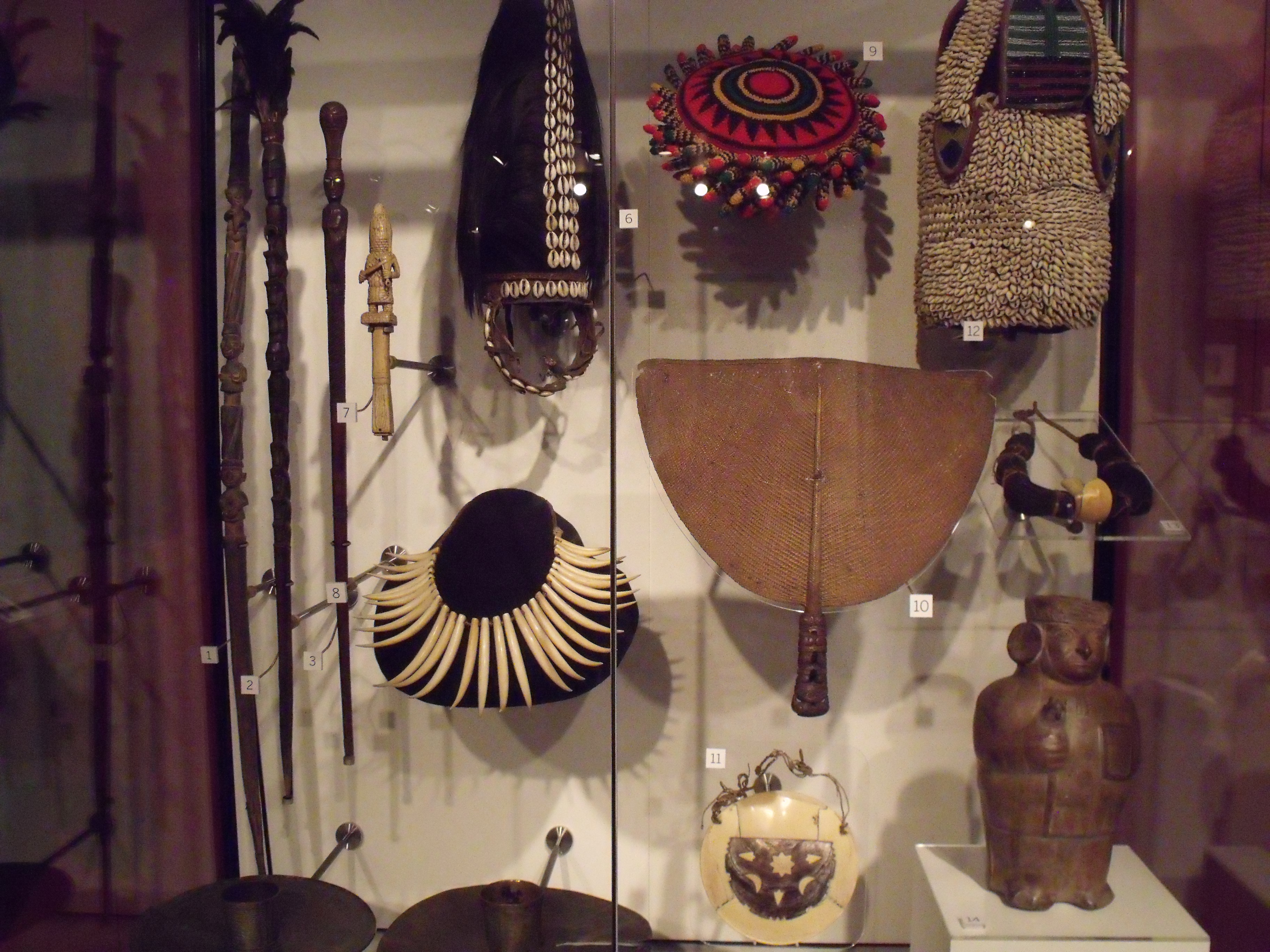


One Comment
Pingback: